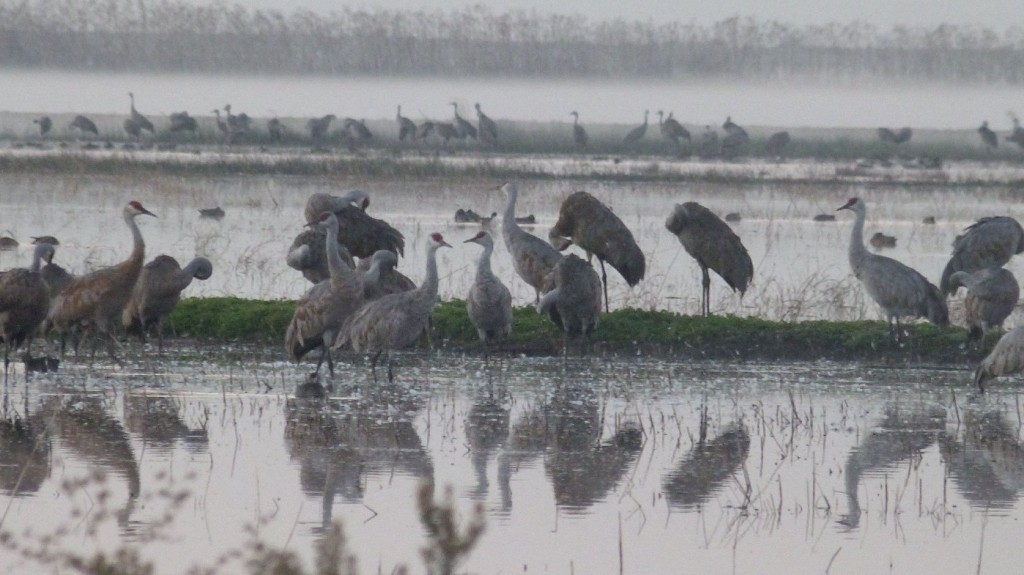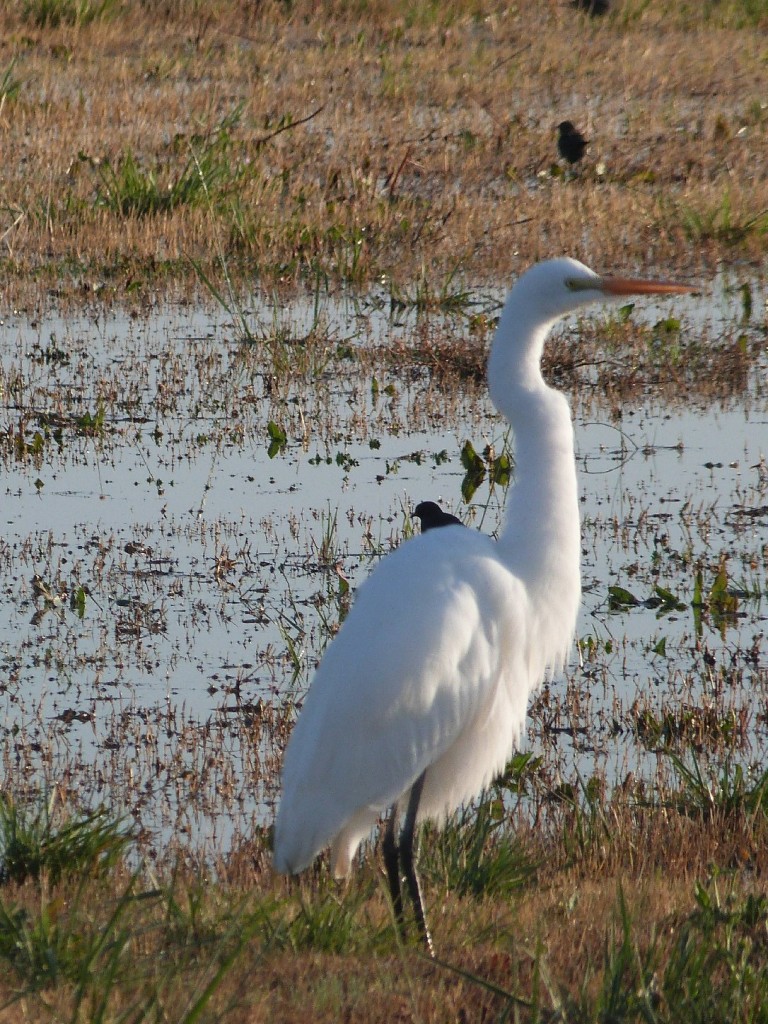
Half an hour before sunrise, we turn into the South Unit of the Woodbridge Ecological Reserve, windows shut against the late October chill. We’re just five miles west of Lodi, but as soon as we open our car doors, all thoughts of civilization fade away as a noisy chorus of otherworldly calls rises from the marsh before us. Hundreds of sandhill cranes greet the day with an avian reveille, rousing the troops in preparation for a day of foraging in the San Joaquin River Delta’s Sycamore Slough with a steady stream of bugle calls, trills, squawks, and honks, just as they have for hundreds of thousands if not millions of years.
A 2.5 million-year-old Pleistocene-era fossil found in Florida makes the sandhill crane (Grus canadensis) among the oldest bird species still alive. Peering at the bird’s impressive physique through binoculars, it’s easy to see why biologists call them living fossils. Among the largest North American birds, they stand nearly five feet tall with a seven-foot wingspan, improbably skinny legs supporting a well-developed body. (Hunters long coveted the birds for their size, and though overhunting once threatened the birds with extinction, 16 states now allow hunting.)
Every September, thousands of cranes flock with youngsters in tow to this Central Valley delta from their breeding grounds in Northern California, Nevada, Oregon, Washington and British Columbia. Joining hundreds of thousands of other migratory birds along the Pacific Flyway (one of four major flyways in the United States), this Central Valley population stays through the winter, bulking up on insects, rodents and leftover grain, before heading back north in March to breed. (A lesser sandhill crane population, called the Pacific Flyway population, also migrates here from Alaska.)

When we first spot the cranes in the misty dawn, they’re stirring from a night of roosting in the open waters of the slough, (mostly) safe from coyotes and other predators. Within a few hours, they’ll head out to forage and rest for the day in nearby corn, rice and wheat fields.
Historic Threats
Though sandhill cranes are the most abundant and widely distributed of the world’s 15 crane species, ranging from eastern Siberia to Cuba, the Central Valley population dropped precipitously during the early part of the last century, victims of overhunting and widespread habitat loss. The transformation of the valley’s floodplains to accommodate agriculture and development deprived waterfowl, shorebirds and waders of 90-95 percent of their seasonal wetland habitat, historically maintained by late-winter rains. By 1983, California listed the greater sandhill crane as a threatened species.